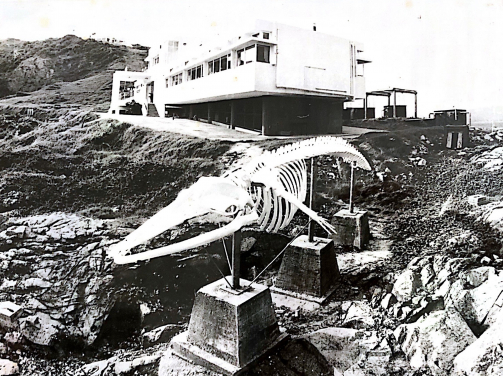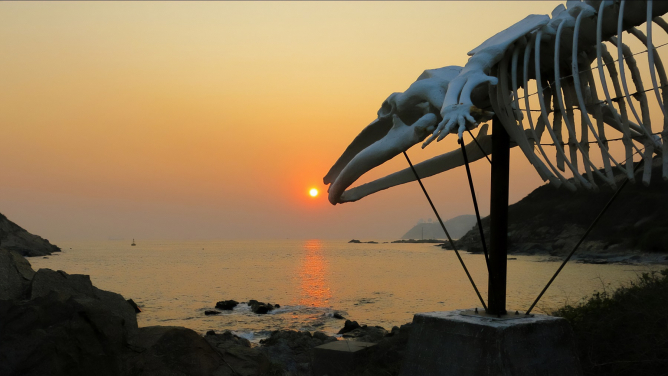Media
HKU Science celebrates the opening of the expansion of the Swire Institute of Marine Science and launches the ‘Restoring Hong Kong’s Whale’ Campaign to revitalise marine conservation icon
29 Jul 2021
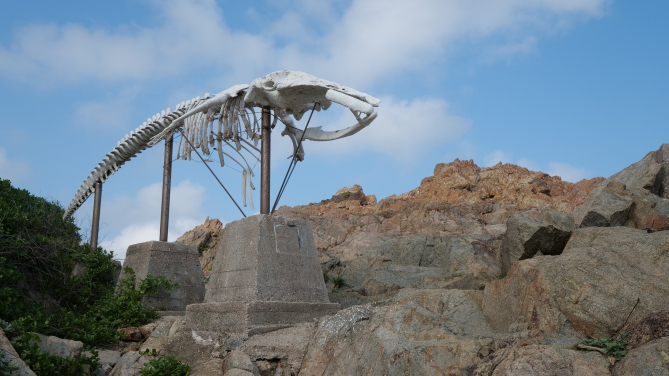
Image 16: The damaged skeletal display of the whale after being ravaged by super typhoon Mangkhut in September 2018.
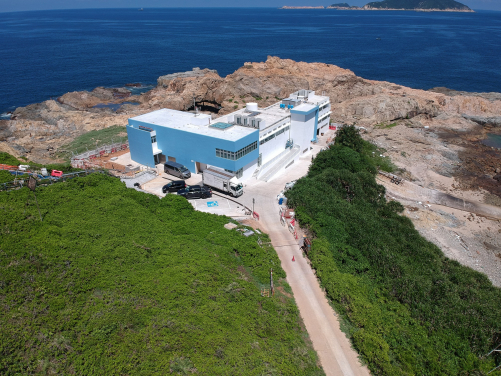
Image 1: The Swire Institute of Marine Science (SWIMS) is an off-campus research and education facility under HKU Science.
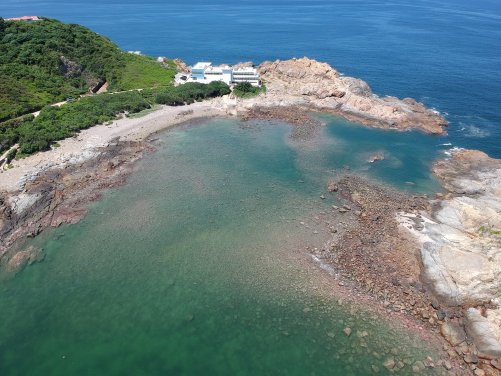
Image 2:The Cape d’Aguilar Marine Reserve, Hong Kong’s only marine reserve where the Swire Institute of Marine Science (SWIMS) is located, is rich in biodiversity.

Image 3: The Re-opening Ceremony of the Swire Institute of Marine Science took place yesterday (July 28) at Cape d’Aguilar Marine Reserve.The officiating guests gathered to unveil the plaque for SWIMS’ expansion. From the left: Professor Gray A Williams, Director of SWIMS, HKU; Mr Merlin Swire, Chairman of Swire Pacific Limited; Professor Xiang Zhang, President and Vice-Chancellor of HKU; Professor Matthew R Evans, Dean of Science, HKU.

Image 4: Replica of whale skeleton produced by 3D printing was presented to officiating guest Mr Merlin Swire, Chairman of Swire Pacific Limited, by Professor Matthew R Evans, Dean of Science, HKU.
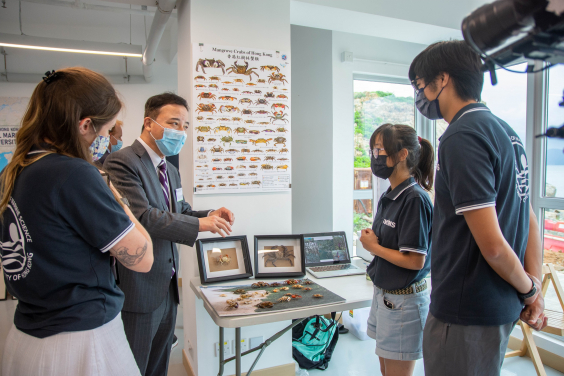
Image 5: Professor Xiang Zhang, President and Vice-Chancellor of HKU was interacting with the researchers while visiting the Biodiversity Centre.

Image 6: Director of SWIMS Professor Gray A Williams introducing the mission of the ‘Restoring Hong Kong's Whale’ campaign, which focuses on raising funds to restore the icon of marine conservation in Hong Kong and to support outreach activities at SWIMS.
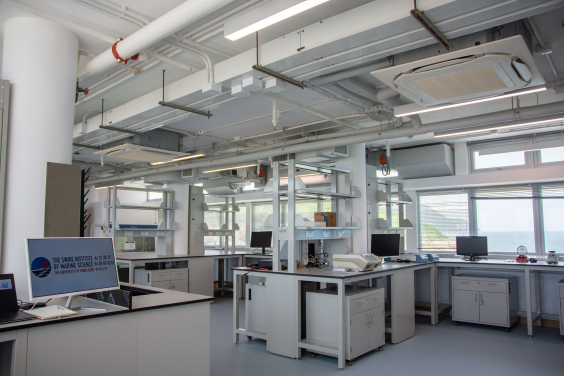
Image 7: Molecular Laboratory - What used to be staff offices and storage space has been converted into a brand new, state of the art molecular lab. It provides a highly sterilised and dry environment for extracting DNA of specimens and performing downstream molecular analysis using advanced equipment.
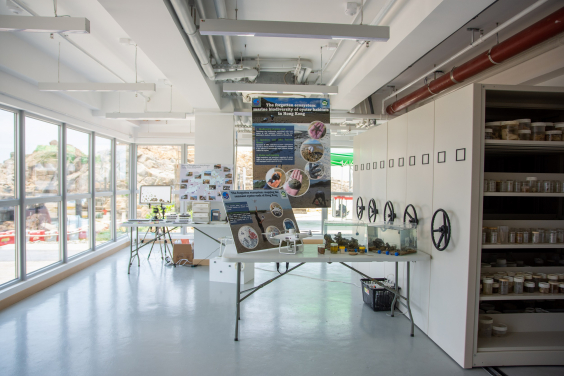
Image 8: Biodiversity Centre - As part of the new structure, the centre will be a multipurpose space for public outreach and community engagement, a classroom for visiting school groups, and a library which houses the SWIMS museum specimen collection. The specimen collection mostly collected from Hong Kong, which will continue to be used for research purposes.
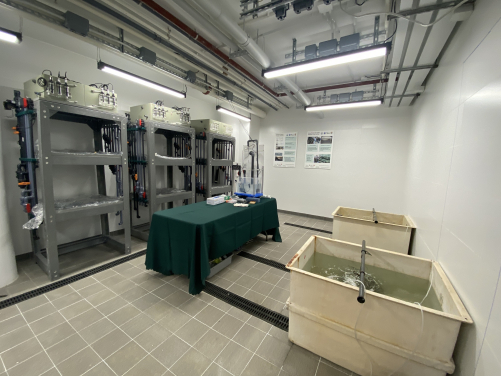
Image 9: Aquarium - Expanded from the existing structure, containing approximately 50-60 individual tanks in different dimensions to accommodate species of different sizes. The aquarium is designed specifically in a controlled environment where lighting and temperature are adjustable for manipulating a day cycle that simulates an environment according to the needs of different species.
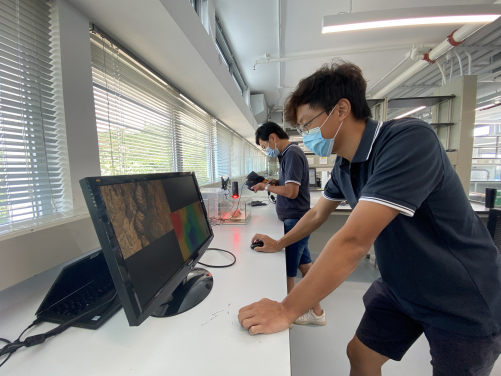
Image 10: The Wet Lab - Associated with the Aquarium, it is designed to perform physiological measurement and dissection of specimens.
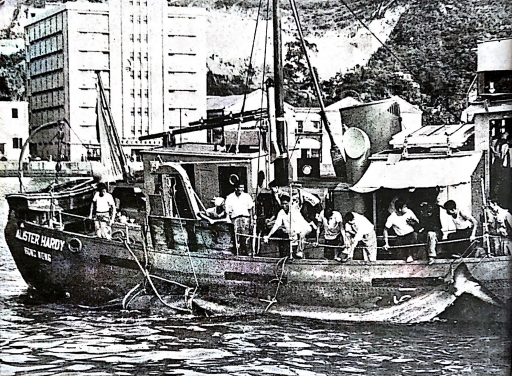
Image 11: The dead whale was tied onto the Research Vessel Alister Hardy and towed to Aberdeen on April 12, 1955.
(Photo credit: Spectrum, No. 4, May 1955)
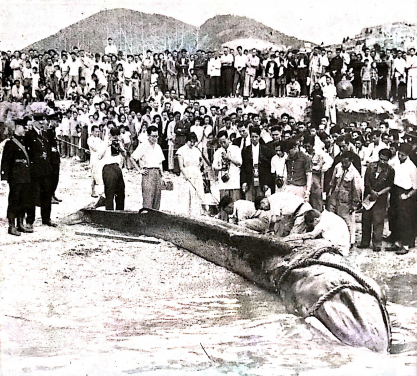
Image 12: Using a high tide the next day, the whale was beached in front of the Government Fisheries Division’s Headquarters in Aberdeen where it was measured and dissected by HKU scientists.
(Photo credit: Spectrum, No. 4, May 1955)
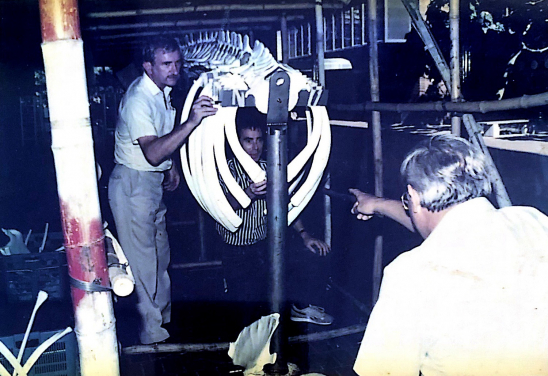
Image 13: After years housed indoors at HKU campus, academics from various departments worked to rebuild the skeleton and take it back to the sea.
- 1 / 16
- 2 / 16
- 3 / 16
- 4 / 16
- 5 / 16
- 6 / 16
- 7 / 16
- 8 / 16
- 9 / 16
- 10 / 16
- 11 / 16
- 12 / 16
- 13 / 16
- 14 / 16
- 15 / 16
- 16 / 16
A Plaque Unveiling and Opening Ceremony took place on July 28, 2021 at the Swire Institute of Marine Science (SWIMS), Faculty of Science of The University of Hong Kong (HKU), at Cape d’Aguilar Marine Reserve, celebrating the opening of SWIMS’ expansion and marking the beginning of a new era in marine research. Riding on its re-opening, SWIMS also launches the ‘Restoring Hong Kong’s Whale’ Campaign to restore the fin whale skeleton, the symbol of marine conservation that has been sitting on the shore beside SWIMS for 3 decades, in the hope of revitalising the icon and appealing for support to educational activities.
Since its inception in 1990, SWIMS has long been a premier marine centre driving our understanding of coastal marine ecosystems in Hong Kong and surrounding regions. Whilst earlier research relied on more field-based approaches, recent technologies have revolutionised marine biology and the new expansion. Three decades since its launch, it comes at an opportune time for SWIMS to modernise and expand its research capacity to provide HKU researchers with state-of-the art facilities.
At the ceremony, President and Vice-Chancellor of HKU Professor Xiang Zhang expressed his heartfelt gratitude to The Swire Group Charitable Trust (Swire Trust) for its continued and committed support of SWIMS research in marine conservation. “The expansion of SWIMS coincides with the University’s development blueprint of building an innovative knowledge hub and redefining the world. This transformative vision, the expansion, and new state-of-the-art facilities will help SWIMS achieve its goal of conserving our rich marine biodiversity to build a sustainable coastal ecosystem. The newly expanded SWIMS will become one of the most iconic landmarks of HKU and I look forward to its great success.”
Mr Merlin Swire, Chairman of Swire Pacific Limited, said: “I congratulate HKU and the Faculty of Science on this wonderful new expansion to SWIMS. Swire has a long history of supporting HKU, and our support for SWIMS has been a highlight of that enduring partnership. When Swire first sponsored the establishment of the SWIMS facility here at Cape d’Aguilar in 1990, we hoped to make a positive contribution to protecting Hong Kong’s unique marine habitat by supporting scientific research and education. In the 30 years since then, SWIMS has gone from strength to strength, establishing itself as one of the leading marine research institutes in the region, dedicated to protecting and sustaining the coastal ecosystem. This new extension will facilitate even closer collaboration with international research organisations, bringing a global perspective on local loss of biodiversity, including the effects of climate change, as well as offering more opportunities for outreach and education. We are proud to have played a part in opening up this exciting new chapter for SWIMS.”
Dean of HKU Science Professor Matthew Evans echoed that Hong Kong, as a coastal metropolis strategically situated at the heart of Asia, is a vital hub to drive research in marine science. “Our newly set up marine biodiversity centre will soon establish an extensive physical and electronic reference base of Hong Kong’s marine life, which will be of use to scientists, government departments, NGOs and environmental institutions,” said Professor Evans. “The new facility will also introduce local citizens and students to the diversity of amazing sea life through its proposed outreach and knowledge transfer programmes.”
About the expansion and new facilities
Forming an L-shape with the existing main building, the expansion and renovation will comprise a molecular laboratory, biodiversity centre and both indoor and outdoor seawater aquaria, providing state-of-the-art facilities for its growing body of new staff and research students. “Through the addition of new facilities, SWIMS will be able to host more researchers from around the world and maintain its leading role in marine science research, while also catering to the growing interest in local marine ecology and biodiversity being developed by citizens in Hong Kong,” said Professor Gray A Williams, Director of SWIMS.
‘Restoring Hong Kong’s Whale’ Campaign
In 2018, Hong Kong’s whale, a skeleton of a juvenile fin whale (Balaenoptera physalus) sitting on the shore beside SWIMS, suffered major damage during Super Typhoon Mangkhut. The Swire Institute of Marine Science (SWIMS) has been the whale’s steward since it was first moved there in 1992. With the reopening of SWIMS, Hong Kong’s whale will undergo its first restoration initiative in twenty years and be ‘re-born’ as a symbol for marine conservation in Hong Kong. The original bones will be preserved in the SWIMS biodiversity centre while new bones designed to withstand typhoon winds, salt spray and Hong Kong’s hot summer sun will be 3D printed using state-of-the-art technology. A restoration campaign is being launched to help support the recreation of the whale skeleton and SWIMS research and education efforts to conserve Hong Kong’s marine environment. For details, please refer to the supplementary information attached.
About the Swire Institute of Marine Science
The Swire Institute of Marine Science (SWIMS), originally named the Swire Marine Laboratory, was established in 1990 and is located at Cape d’Aguilar as an off-campus facility of HKU’s Faculty of Science. SWIMS facilitates and enhances interdisciplinary research, with its major research focus on coastal marine systems and their biodiversity and ecology, particularly in relation to the themes of habitat destruction and restoration; global change and adaptation; and overexploitation and sustainability. It currently has around 75 scientists conducting active research, including many which stay in its accommodation on the cliffs overlooking SWIMS, and has recently received funding from The Swire Group Charitable Trust, the Faculty of Science, the University, and the HKSAR Government to expand its facilities to enhance its vibrant research environment.
Website of SWIMS: https://www.swims.hku.hk
Website of the Opening Expansion of SWIMS and Restoration Campaign of the Hong Kong’s Whale:
https://www.scifac.hku.hk/swims-expansion-oc
For media enquiries, please contact Ms Casey To, External Relations Officer (tel: 3917 4948; email: caseyto@hku.hk / Ms Cindy Chan, Assistant Director of Communications of HKU Faculty of Science (tel: 3917 5286; email: cindycst@hku.hk).
Supplementary Information for ‘Restoring Hong Kong’s Whale’ Campaign
History of the Baby Whale
In the summer of 1955, a baby Fin whale was discovered in Hong Kong waters. It was first seen floating among the pilings under Ming Shan Wharf in Victoria Harbour. The young male was, sadly, separated from its mother while migrating north from the South China Sea and was slowly starving. After marine police euthanised the whale, it was towed to Aberdeen where it was processed by HKU zoologists. The skeleton was preserved and displayed across several buildings on the HKU campus, out of sight of the sea, for the following 35 years. To help return the whale to the seashore, the skeleton underwent a year-long reconstruction and was found a new home on the shores of Cape d’Aguilar next to the newly established Swire Marine Laboratory in 1991, overlooking the South China Sea since then.
Storm Damage
Unfortunately, the Hong Kong’s whale suffered major damage during 2018’s super typhoon, Mangkhut, which ravaged Hong Kong with 170 km/hr wind gusts for over two days. The supportive structures connecting the bones were bent by the storm’s incessant winds, causing many of the ribs to crack, the lower right jawbone was dislodged and the left hip bone blown away. After the storm, despite remedial efforts, the whale continues to deteriorate on the exposed, sun baked rocks of Cape d’Aguilar.
The Whale’s Rebirth
With the reopening of SWIMS, Hong Kong’s whale will undergo its first restoration initiative in 20 years and be re-born as a symbol for marine conservation. The original bones will be preserved in the SWIMS biodiversity collection while new bones of 1:1 size designed to withstand typhoon winds, salt spray, and Hong Kong’s hot summer sun for many years will be 3D printed using state of the art technology. The campaign aims to support the recreation of the whale skeleton, as a figurehead for SWIMS research and education efforts to conserve Hong Kong’s marine environment. As such, the whale will be named to celebrate its ‘re-birth’.
Restoration Campaign
This ‘Restoring Hong Kong's Whale’ campaign focuses on raising funds to restore this icon of Hong Kong back to its original glory, to contribute towards marine conservation in Hong Kong and to support outreach activities at SWIMS. Donors can get a chance to vote for their favourite name for the baby whale, which will be remembered generations from now. To show the sincere gratitude of HKU and SWIMS, a small-scale 3D printed replica of the whale will be given to donors with contributions of HK$8,000 or above. Souvenirs will be offered while stock lasts.
Campaign website: https://www.scifac.hku.hk/swims-whale-campaign
Images download and captions: https://www.scifac.hku.hk/press

